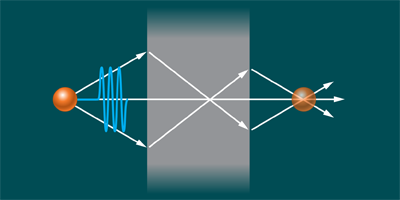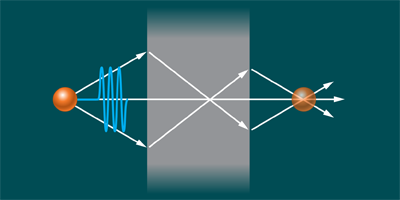Time-Dependent Fields Improve Superlens Resolution
In principle, a sheet of metal can be a perfect lens, reproducing an image with arbitrarily small features, because the metal surface supports waves with wavelengths much shorter than that of light. But although experiments have confirmed improved resolution, the metal lens is ultimately limited by losses. Now in Physical Review Letters, Alexandre Archambault and co-workers at the Institute of Optics in Palaiseau, France, argue that light whose amplitude varies rapidly in time could overcome this limitation.
Near the frequency of a metal’s internal oscillation, like a plasmon or phonon, the real part of the dielectric constant can pass through the value . Under these conditions, an object on one side of a metal sheet can create an image on the other side with details finer than the corresponding wavelength of light. But real surface plasmons or phonons decay in picoseconds or less, causing a phase shift that prevents perfect cancellation. Archambault and colleagues suggest that an electromagnetic field with a complex (real plus imaginary) frequency, which decreases rapidly in amplitude as it oscillates, can restore the cancellation.
The researchers tested their argument in numerical simulations in which they abruptly terminated the oscillating field from a point source. As they expected, the blurry image of the source got progressively sharper in the following picoseconds. At the same time, however, the sharpening image became rapidly fainter, which will make this technique hard to exploit. Still, the results show a new way to evade apparent limits on optical manipulation using super lenses. – Don Monroe





